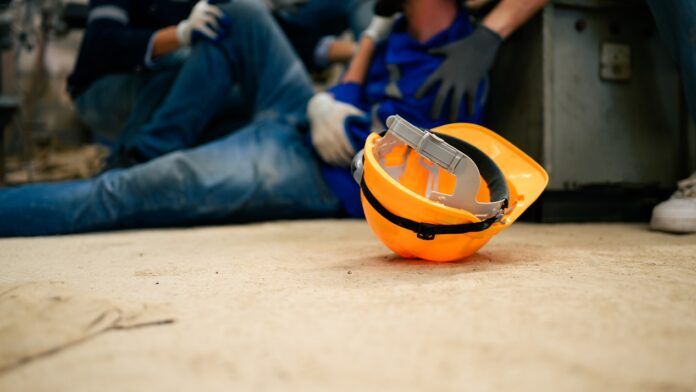One hundred and thirty-five workers were killed in work-related incidents in the UK in the last year with the highest amount in construction (45), according to figures published by the Health and Safety Executive (HSE).
The annual data release published by the HSE covers the period from April 2022 to March 2023.
The three most common causes of fatal injuries are falls from height (40), being struck by a moving object (29), and being struck by a moving vehicle (20).
The total of 135 worker deaths in 2022/23 is higher than the previous year (123) but is in line with pre-pandemic levels – the figure for 2020/21 was 145.
However, Britain remains one of the safest places in the world to work. There has been a long-term downward trend in the rate of fatal injuries to workers, though in the years prior to the coronavirus pandemic the rate was broadly flat.
A further 68 members of the public were killed following a work-related incident in 2022/23 – a decrease of 20 from last year.
HSE’s chief executive Sarah Albon said: “Any loss of life in the workplace is a tragedy.
“While these figures show Great Britain is one of the safest countries in the world to work, safety must continue to be at the top of everyone’s agenda.
“Our mission is to protect people and places and we remain committed to maintaining safe workplaces and holding employers to account for their actions.”
Industry comment
Nick Higginson, CEO of Phoenix Health & Safety, commented on the figures: “It should be the priority of every employer in all industries to put health and safety at the forefront of their minds, and invest in this area by upskilling their management team and workforce as a whole.
“Courses such as IOSH Managing Safely, NEBOSH General Certificate, and Working at Height training are potentially life saving investments that business leaders can make to ensure their workforce remains safe.
Outside of these courses, there are other ways employers can improve safety standards in the workplace. Below, Nick shares three ways companies can do this:
- Create a policy of openness
“It’s important that health and safety guidelines are followed by all in the business, and the best way to do that is to make sure all employees are accountable and invested in the safety of their workplace. You should empower your employees to challenge breaches of health and safety, either through frank and open conversation, or through anonymous reporting, to allow unsafe habits to be broken before they take hold.”
- Reward employees for safe behaviour
“When businesses offer a reward system for following safe behaviour, such as ensuring the correct processes are undertaken throughout their day to day role, it not only reinforces this to the workforce but would likely lead to less workplace injury. Others tend to follow suit as they understand the best way to be recognised for their hard work is to do things in the correct manner rather than the fastest way.”
- Provide regular meetings on workplace safety
“In many cases, health & safety training is taught when onboarding staff, however a one-off approach will not suffice when keeping your workplace safe continuously over the years. Regular health & safety training allows the business to refresh and remind employees of their duty to follow protocols and maintain positive behaviours. It also provides staff with an opportunity to ask any questions and offer an open flow of communication in the business.”




